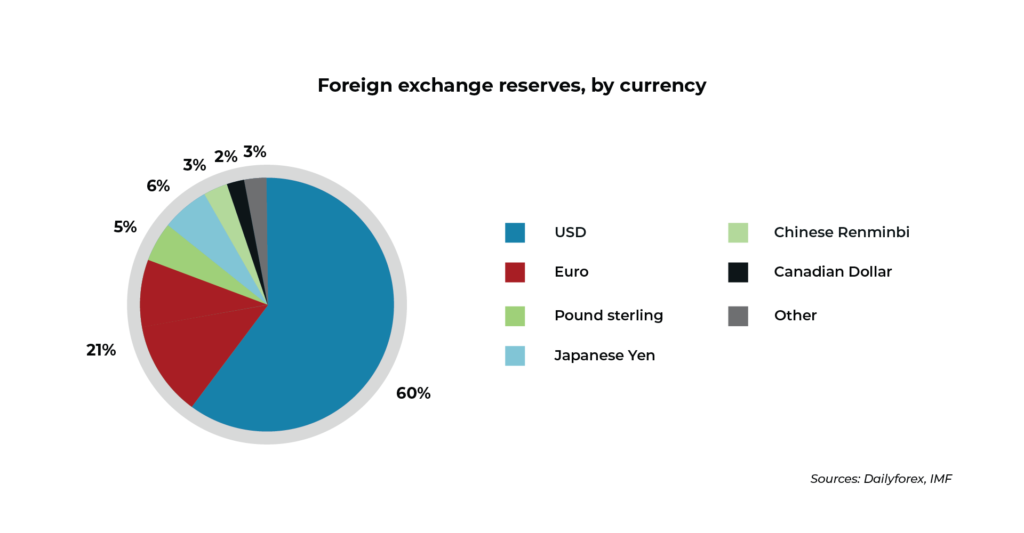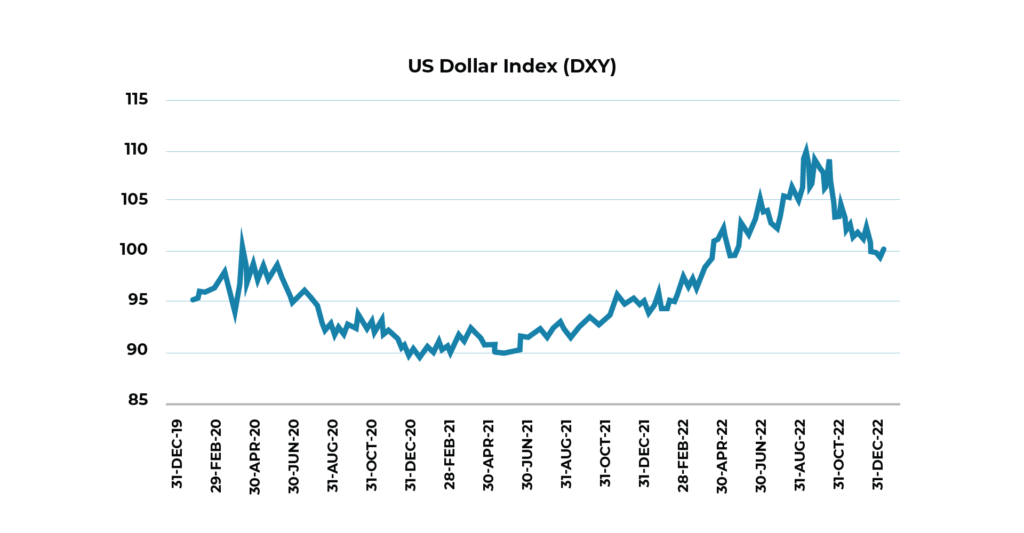Rise of the petro-dollar
1970s was considered a tumultuous decade for global politics and economics. On one hand, the world witnessed the collapse of the Bretton Woods system in 1971 and on the other, we saw the US dollar’s emergence as the main currency for international trade. The greenback became the prominent global currency, especially after a 1973 agreement with the oil-rich Kingdom of Saudi Arabia for conducting worldwide energy trade in dollars. By 1975, all of the OPEC members accepted the arrangement and started exporting oil in US dollars.
The dollar’s prominence as the world currency for trade rose gradually. Currently, about 70% of the global trade, 60% of foreign exchange reserves at central banks, and 90% of global FX transactions are undertaken through USD, despite the fact that the US accounts for about 20% of the world GDP. Moreover, USD is being viewed as a safe-haven and relatively risk-free asset.

The US has significant advantages vis-à-vis other nations due to the dollar’s dominant role (a fiat currency) in the world economy. Since long it has used its status as the currency of choice for international trade to achieve foreign policy objectives by imposing sanctions on countries not in sync with its larger goals. Yet, in recent years, several countries have exerted efforts to transition to de-dollarisation.
What is de-dollarisation?
De-dollarisation is the process of reducing the dollar’s importance, whether as a global currency for international trade or forex transactions or as any dollar-denominated asset, while propping up regional or other currencies like the yuan, or even gold, to counter its influence.
Why de-dollarisation?
The need for de-dollarisation arose mainly from concerns of several countries over weaponization of the dollar by the US to secure its own interests at the cost of many nations, especially emerging and frontier ones. Factors such as weaponization of trade, imposition of sanctions on countries, individuals, entities, and organizations, and exclusion from the Society for Worldwide Interbank Financial Telecommunication (SWIFT) coupled with a strong dollar against major currencies can hasten the de-dollarisation process. Countries displaying diplomatic and economic autonomy are particularly wary of using US-dominated global banking systems.
Is the strengthening dollar a major concern for most importing nations?
Sheer strength of the dollar in the first half of 2022 led to sharp inflation across several low-income economies and emerging markets. An appreciating dollar swiftly increased prices of imported food items and fuel in smaller economies like Nigeria and Somalia. On the other hand, debt-ridden countries, such as Egypt and Kenya, were on the verge of bankruptcy due to a strong dollar. Naturally, these regions have been more inclined to consider other alternatives.

Recent de-dollarisation initiatives
- Russia and China are promoting their currencies for international payments. For example, Russia seeks payments in ruble for energy supplies, while China announced oil trade in yuan at the recently-held Gulf summit in Riyadh to internationalise its currency and weaken the USD. Both countries plan to introduce a new payment system that bypasses SWIFT.
- As a small step, China extended trading hours for the onshore yuan in an attempt to increase the currency’s international use.
- India seeks to internationalise the rupee and is securing a bilateral payment mechanism with the UAE.
- Brazil and Argentina are exploring options to introduce a common currency to boost regional trade and reduce dependence on the USD. Other Latin American nations will likely be invited to join the initiative that, in turn, could create the world’s second-largest currency union.
- Iran and Russia plan to launch a stablecoin backed by gold.
- Saudi Arabia is open to settling oil and gas trades in currencies other than the USD.
- Other smaller nations are experimenting with de-dollarisation. Belarus is selling USD and buying more gold, while Bangladesh, Kazakhstan, and Laos are exploring the use of yuan to boost trade with China.
Would it be successful?
While it is too soon to anticipate the dollar losing its status as a major global currency—given the constraints of several countries—the process is, nevertheless, gathering steam. Amid the changing geopolitical scenario, it has become a common objective for most countries to reduce dependence on the dollar and mitigate the risk of currency shocks. Expansion in BRICS (Brazil, Russia, India, China and South Africa) could provide further impetus to the de-dollarisation trade. Though the process is slow, many prominent currencies are gaining importance in global trade with diversification in the currency market.
Author: Pravin Bokade, Director- Investment Research




